
Xách tay 3 trong 1 cầm tay sợi Laser hàn làm sạch máy cắt với máy nhỏ trường hợp 1500 Wát 2000 Wát
2.000,00 US$ - 4.500,00 US$
Min Order: 1 Bộ
Warranty: 1 Year
CNSupplier


Nhà Máy Giao hàng trực tiếp máy hàn laser 1kw 1.5KW sợi cầm tay máy hàn laser Hàn
4.300,00 US$ - 5.100,00 US$
Min Order: 1 Bộ
Warranty: 2 Years
Laser Source Brand: Max
CNSupplier


Khuôn Vòng Cổ Trang Sức Bạc Vàng Để Bàn Mini Công Suất Cao 100W 150W 200W Máy Hàn Laser Trang Sức Máy Hàn Laser
3.250,00 US$ - 3.450,00 US$
Min Order: 1 Bộ
Warranty: 1 Year
Laser Source Brand: Coherent
CNSupplier
11 yrs


Cầm tay máy hàn laser 1500W 2000W Lazer thợ hàn Máy hàn laser
3.060,00 US$ - 3.400,00 US$
Min Order: 1 Bộ
Warranty: 2 Years
Laser Source Brand: Bwt
CNSupplier


Oree Máy Hàn Laser Cầm Tay Mẫu CNC Thiết Kế Mới Bốn Trong Một Chức Năng 3000W
3.500,00 US$ - 4.200,00 US$
Min Order: 1 Bộ
Warranty: 2 Years
Laser Source Brand: Max
CNSupplier


Máy Hàn Laser Trang Sức Máy Hàn Laser Trang Sức Máy Hàn Laser Dành Cho Trang Sức
Sẵn sàng vận chuyển
7.000,00 US$ - 7.100,00 US$
Min Order: 1 Bộ
Shipping per piece: 215,98 US$
Warranty: 2 Years
CNSupplier

Máy Hàn Laser Vàng 200W Dành Cho Máy Hàn Laser Trang Sức
Sẵn sàng vận chuyển
7.980,00 US$
Min Order: 1 Bộ
Shipping per piece: 845,00 US$
Warranty: 1 Year
CNSupplier

Giá Máy Hàn Trang Sức Cầm Tay, Giá Máy Hàn Laser Trang Sức Mini, Máy Hàn Laser Trang Sức
Sẵn sàng vận chuyển
3.700,00 US$ - 3.900,00 US$
Min Order: 1 Bộ
Shipping per piece: 1.200,00 US$
Warranty: 1 Year
Laser Source Brand: Spi
CNSupplier
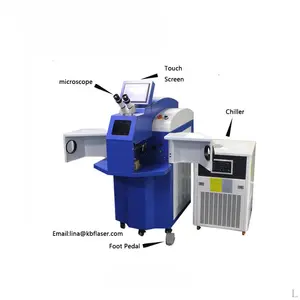
Máy Hàn Laser Yag 200W Cầm Tay Cho Trang Sức Máy Hàn Laser Giá Máy Hàn Laser Trang Sức Vàng Bạc Meta
Sẵn sàng vận chuyển
3.230,00 US$
Min Order: 1 Bộ
Shipping per piece: 2.990,00 US$
Warranty: 2 Years
Laser Source Brand: Coherent
CNSupplier
11 yrs

Máy Hàn Laser Cầm Tay Leapion Cho Nhà Phân Phối Kim Loại Giá Máy Hàn Laser Công Nghiệp Sản Xuất Tại Trung Quốc Được Sử Dụng
3.500,00 US$ - 4.500,00 US$
Min Order: 1 Mẫu Anh
Warranty: 3 Years
Laser Source Brand: Max
CNSupplier
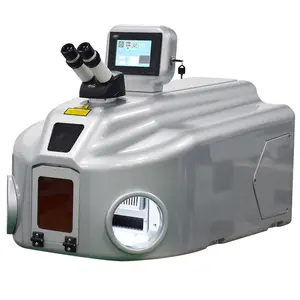
Máy Hàn Laser Trang Sức Nha Khoa Để Bàn Giảm Giá Mạnh 2020 Máy Hàn Thiếc
4.599,00 US$ - 4.780,00 US$
Min Order: 1 Bộ
CNSupplier
6 yrs

HGTECH Stainless Steel Handheld Fiber Laser Welding Machine Laser Welding Solder Machine Price 1000w Used
8.800,00 US$ - 38.000,00 US$
Min Order: 1 Bộ
Warranty: 3 Years
Laser Source Brand: Raycus
CNSupplier

Máy Hàn Laser Bằng Sợi Quang Giá Máy Hàn Laser 4 Trục
Sẵn sàng vận chuyển
18.000,00 US$
Min Order: 1 Bộ
Shipping per piece: 190,00 US$
Warranty: 1 Year
Laser Source Brand: Max
CNSupplier
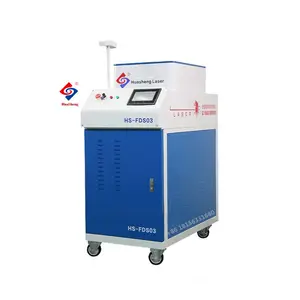
Máy Hàn Laser Tại Chỗ Cầm Tay/Máy Hàn Laser Bằng Thép Không Gỉ/Máy Hàn Laser Kim Loại Cầm Tay
9.000,00 US$ - 10.000,00 US$
Min Order: 1 Bộ
Warranty: 1 Year
Laser Source Brand: Max
CNSupplier
4 yrs

Máy Hàn Laser Năng Suất Cao 1000W 1500W 2000W Máy Hàn Quang Bằng Sợi Quang Máy Hàn Laser Giá Bán Đã Qua Sử Dụng
4.050,00 US$ - 11.700,00 US$
Min Order: 1 Mẫu Anh
Warranty: 3 Years
CNSupplier
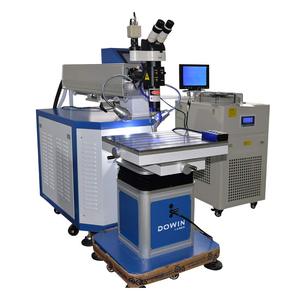
Nhà Cung Cấp Trung Quốc Sửa Chữa Khuôn Laser Thợ Hàn Kim Loại Thép Không Gỉ Nickel Lạnh Đồ Trang Sức Vàng Yag Laser Hàn Máy Hàn 200W
5.800,00 US$ - 6.050,00 US$
Min Order: 1 Bộ
Warranty: 1 Year
CNSupplier
7 yrs
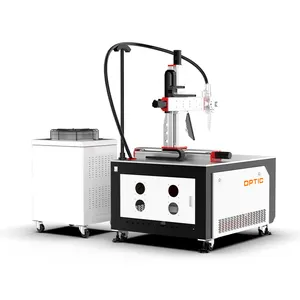
Chuyên nghiệp Lithium Ion pin Máy hàn laser tự động raycus jpt max 1000 Wát sợi Laser Hàn máy hàn
10.000,00 US$ - 11.000,00 US$
Min Order: 1 Bộ
Laser Source Brand: Raycus
CNSupplier

Máy Hàn Laser Trang Sức Bán Chạy 2020 200W Từ Nhà Máy Tế Nam
Sẵn sàng vận chuyển
1.000,00 US$
Min Order: 1 Bộ
Shipping per piece: 100,00 US$
Warranty: 3 Years
Laser Source Brand: Raycus
CNSupplier
7 yrs

Máy Hàn Sắt Hàn Laze Chutian, Máy Hàn Sắt Phân Đoạn Kim Cương 500W
29.999,00 US$
Min Order: 1 Bộ
Warranty: 2 Years
Laser Source Brand: Ipg
CNSupplier

Máy Hàn Laze Cầm Tay Tiết Kiệm Năng Lượng 1000W/1500W/2000W 15 Mm Ss Yosoon Với Dây Cấp Tự Động
Sẵn sàng vận chuyển
9.500,00 US$ - 16.980,00 US$
Min Order: 1 Bộ
Shipping per piece: 553,86 US$
Warranty: 3 Years
Laser Source Brand: Raycus
CNSupplier
4 yrs

Máy Hàn Laser Mini Vàng Yag 60W Máy Hàn Chùm Tia Laser Trang Sức Xách Tay Để Bán
Sẵn sàng vận chuyển
3.999,00 US$ - 4.299,00 US$
Min Order: 1 Bộ
Shipping per piece: 520,00 US$
Warranty: 1 Year
CNSupplier
7 yrs
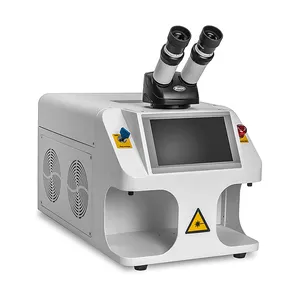
Máy Hàn Điểm Trang Sức Chất Lượng Cao
Sẵn sàng vận chuyển
3.000,00 US$ - 4.200,00 US$
Min Order: 1 Cái
Shipping per piece: 113,39 US$
Warranty: 1 Year
CNSupplier

Suvenirs Để In Trong Máy Hàn Laser Sợi Laser
10.000,00 US$ - 26.000,00 US$
Min Order: 1 Bộ
Warranty: 3 Years
Laser Source Brand: Raycus
CNSupplier
5 yrs

Bán Hot Đa Điểm Cầm Tay 500 Wát Quảng Cáo Thư Laser Hàn Máy Hàn Với CE
3.300,00 US$ - 3.750,00 US$
Min Order: 1 Bộ
Warranty: 1 Year
CNSupplier

Máy Hàn Laze Bằng Sợi Quang 2000W Lightweld 1500 Hệ Thống Máy Làm Chuỗi Cầm Tay Cho Trang Sức
10.000,00 US$ - 20.000,00 US$
Min Order: 1 Hộp
Warranty: 2 Years
Laser Source Brand: Raycus
CNSupplier
6 yrs

Giá Thấp 400 Wát 500 Wát 600 Wát Crane Arm Khuôn Máy Hàn Laser Sắt Cho Hàn Khuôn Mẫu Lớn
9.200,00 US$
Min Order: 1 Bộ
Warranty: 3 Years
Laser Source Brand: Raycus
CNSupplier

Máy Hàn Laser Sợi Cầm Tay 1000W/Máy Hàn Laser Sợi Thép Không Gỉ Hàn Laser
Sẵn sàng vận chuyển
10.900,00 US$ - 12.000,00 US$
Min Order: 1 Bộ
Shipping per piece: 260,00 US$
Warranty: 1 Year
CNSupplier
7 yrs
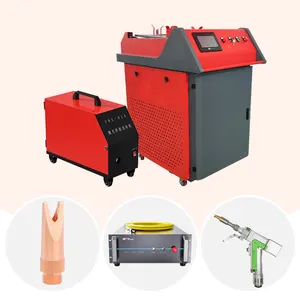
Máy Hàn Laser Sợi Quang Cầm Tay Máy Hàn Laser Thép Không Gỉ 1000W 1500W 2000W Kết Nối Kim Loại Dễ Vận Hành
4.200,00 US$ - 8.500,00 US$
Min Order: 1 Bộ
Warranty: 3 Years
Laser Source Brand: Raycus
CNSupplier
2 yrs
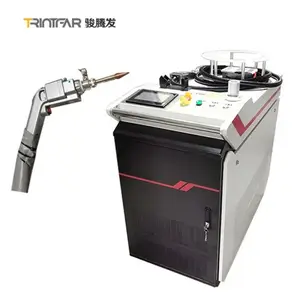
Máy Hàn Laser Wave Liên Tục Cầm Tay 1000W Kim Loại Thép Không Gỉ/Máy Hàn Laser Nhôm/Máy Hàn
5.000,00 US$ - 8.000,00 US$
Min Order: 1 Bộ
Warranty: 3 Years
CNSupplier

Handheld fiber laser welding machine continuous laser solder metal alloy stainless steel factory price 1000W 1500W
9.000,00 US$ - 11.500,00 US$
Min Order: 1 Bộ
Warranty: 2 Years
Laser Source Brand: Raycus
CNSupplier
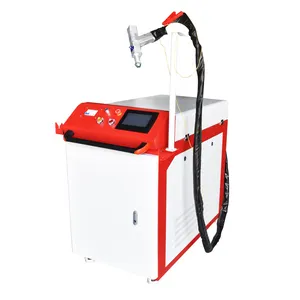
Máy Hàn Laser Lạnh Siêu Đa Chức Năng Robot Hàn Laser Cho Kim Loại
4.702,05 US$ - 4.738,50 US$
Min Order: 1 Bộ
Warranty: 3 Years
CNSupplier
5 yrs

Nhà Máy Giá Đồ Trang Sức Máy Hàn Laser Giá Portablejewelry Laser Điểm Hàn Máy Để Bán
Sẵn sàng vận chuyển
3.700,00 US$ - 3.900,00 US$
Min Order: 1 Bộ
Shipping per piece: 1.200,00 US$
Warranty: 1 Year
Laser Source Brand: Spi
CNSupplier
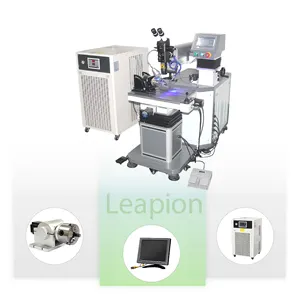
Bán Máy Hàn Laze Trang Sức MINI 100W 200W Máy Hàn Laze Xách Tay
1.400,00 US$ - 4.800,00 US$
Min Order: 1 Mẫu Anh
Warranty: 2 Years
CNSupplier
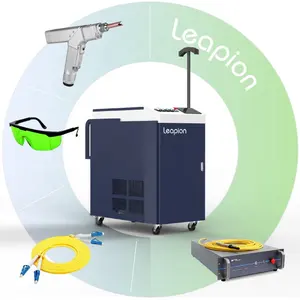
Máy Hàn Laze Cầm Tay Leapion 1500W Với Đầu Sợi Được Sử Dụng
4.500,00 US$ - 13.000,00 US$
Min Order: 1 Mẫu Anh
Warranty: 3 Years
CNSupplier
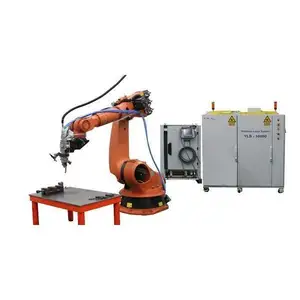
Chutian 6 Trục Sợi Laser Hàn Robot Cho Thép Không Gỉ Và Nhôm Laser Hàn Giá Máy
29.999,00 US$
Min Order: 1 Bộ
Warranty: 2 Years
Laser Source Brand: Ipg
CNSupplier

HGTECH Cnc 1000 Wát 1500 Wát Cầm Tay Xách Tay Sợi Laser Máy Hàn Cầm Tay Giá Với Raycus Để Hàn Kim Loại Laser Welde
8.800,00 US$ - 38.000,00 US$
Min Order: 1 Bộ
Warranty: 5 Years
Laser Source Brand: Raycus
CNSupplier

Máy Hàn Laser Cầm Tay/Lazer Kaynak
Sẵn sàng vận chuyển
9.500,00 US$
Min Order: 1 Bộ
Shipping per piece: 100,00 US$
Warranty: 3 Years
Laser Source Brand: Raycus
CNSupplier
7 yrs
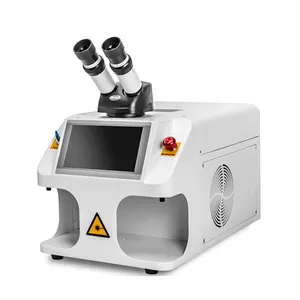
Máy Hàn Laser Mini Màu Vàng Bạc Dành Cho Đồ Trang Sức Hàn
Sẵn sàng vận chuyển
3.000,00 US$ - 4.200,00 US$
Min Order: 1 Cái
Shipping per piece: 113,40 US$
Warranty: 1 Year
CNSupplier

Máy Hàn Laze Trang Sức Vàng Giá Cho Khuôn Khung Kính Kim Loại Bạc
Sẵn sàng vận chuyển
3.999,00 US$ - 4.299,00 US$
Min Order: 1 Bộ
Shipping per piece: 520,00 US$
Warranty: 1 Year
CNSupplier
7 yrs

Mini YAG Trang Sức Tại Chỗ Laser Hàn Và Máy Hàn Vàng Bạc Với Kính Hiển Vi Xuất Khẩu Sang Đức Ý K-EDN5801
4.500,00 US$
Min Order: 1 Bộ
Warranty: 2 Years
CNSupplier



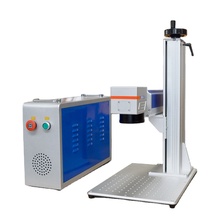



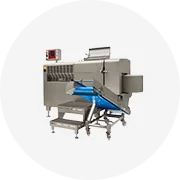






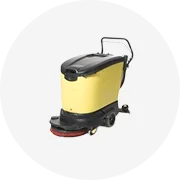


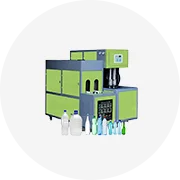
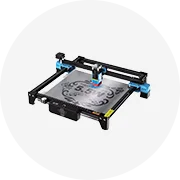

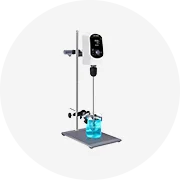
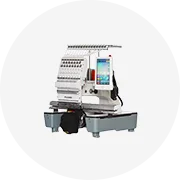









 浙公网安备 33010002000092号
浙公网安备 33010002000092号 浙B2-20120091-4
浙B2-20120091-4